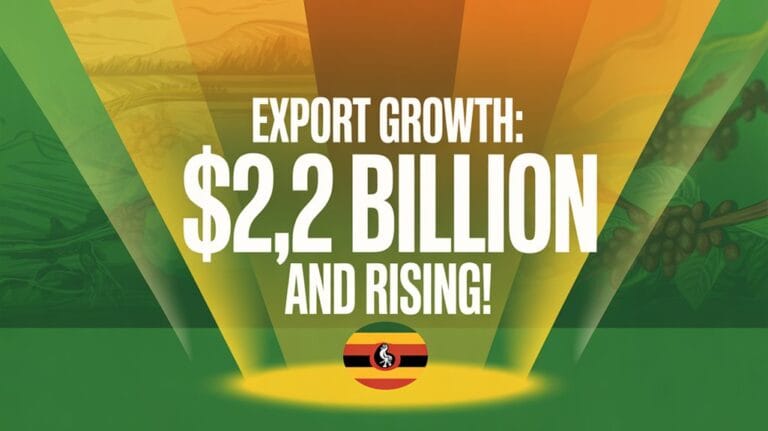Uganda’s SCAJ Showcase highlights the country’s growing export industry, which has surpassed $2.2 billion. This achievement reflects the ongoing efforts in export diversification and market expansion.
Uganda has increasingly focused on non-traditional exports. These include products like electricity, sugar, and base metals. The government and business sectors are actively working to improve the range of goods that Uganda sells to the world. This strategy helps reduce reliance on a few pivotal products, such as coffee and tea.
Uganda is diversifying its export portfolio with a focus on non-traditional goods like electricity, sugar, and base metals.
Exports of manufactured goods saw a significant rise, reaching $1.1 billion. This marks a 72.1% increase compared to previous figures. Such growth can be linked to stronger private sector productivity and better general export infrastructure. With these improvements, more businesses are able to reach international markets and increase their sales overseas.
Numerous sectors, especially agriculture, account for a large percentage of total exports. In fact, agricultural products make up approximately 80% of what Uganda sells abroad. Coffee, which has its roots in Ethiopia, has historically been a critical part of this agricultural sector.
The SCAJ Showcase also demonstrated the importance of regional markets. Countries in the Middle East are now Uganda’s largest export destination, making up 37.6% of total exports. The East African Community (EAC) follows closely, accounting for 27.2% of the exports. Diversifying export markets is vital for Uganda as it helps mitigate risks associated with dependency on specific markets.
Notably, non-coffee exports increased by 37.2% to $432.81 million, showcasing the effectiveness of Uganda’s diversification efforts. Coffee remains a strong contender, generating $214.38 million in April 2025, up 153.1% from the prior year. This is reminiscent of how Brazil transitioned its economy with coffee cultivation from reliance on sugar and gold.
Despite the upswing, Uganda still faces challenges like trade deficits and capital flow issues. Nevertheless, the strides in export diversification and market expansion indicate a promising future for the country’s exporting endeavors.
With continued focus on these strategies, Uganda may well be on its way to sustained growth in the coming years.

